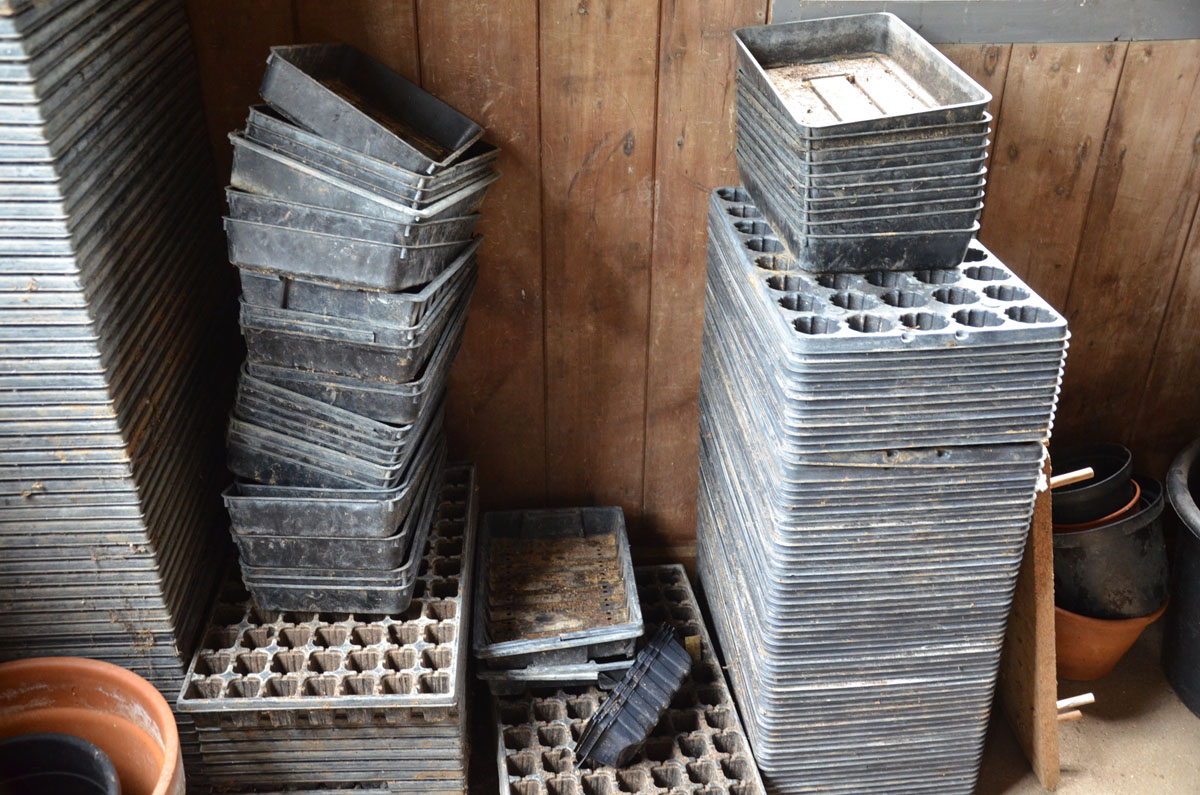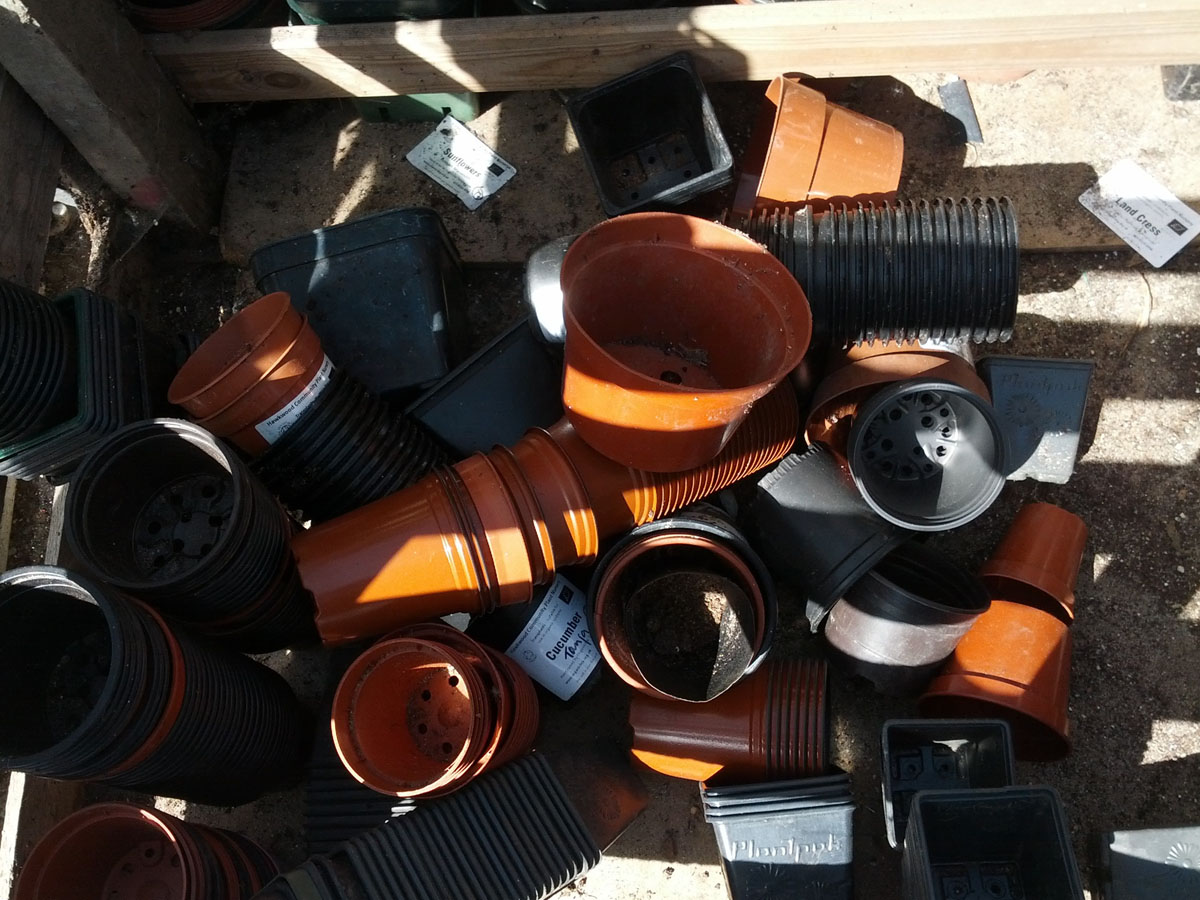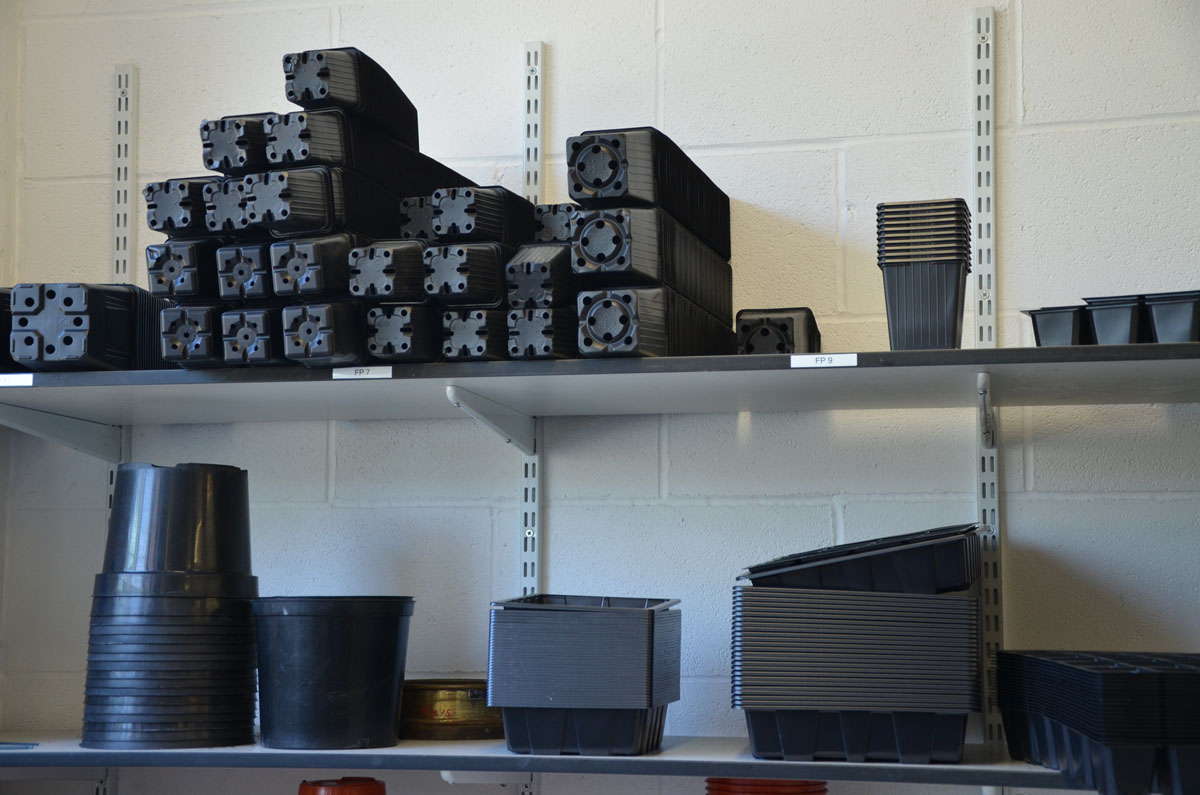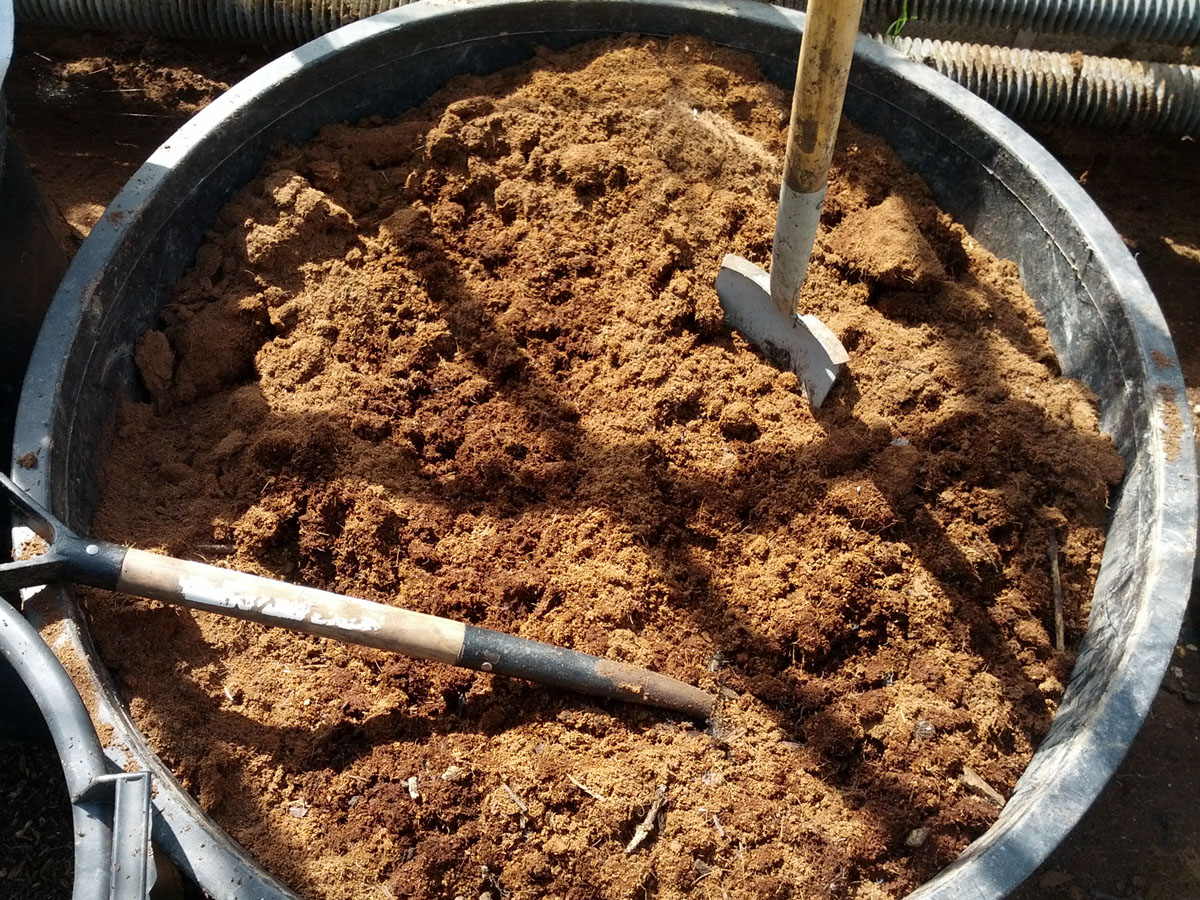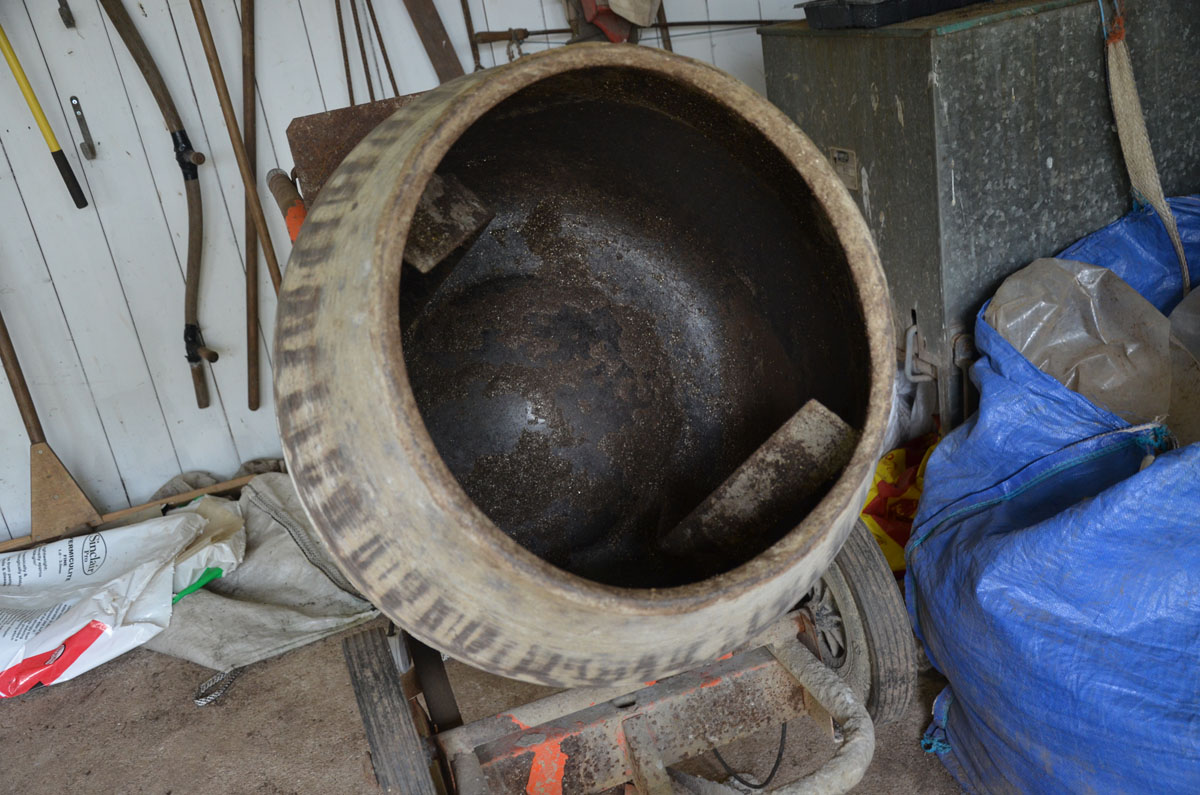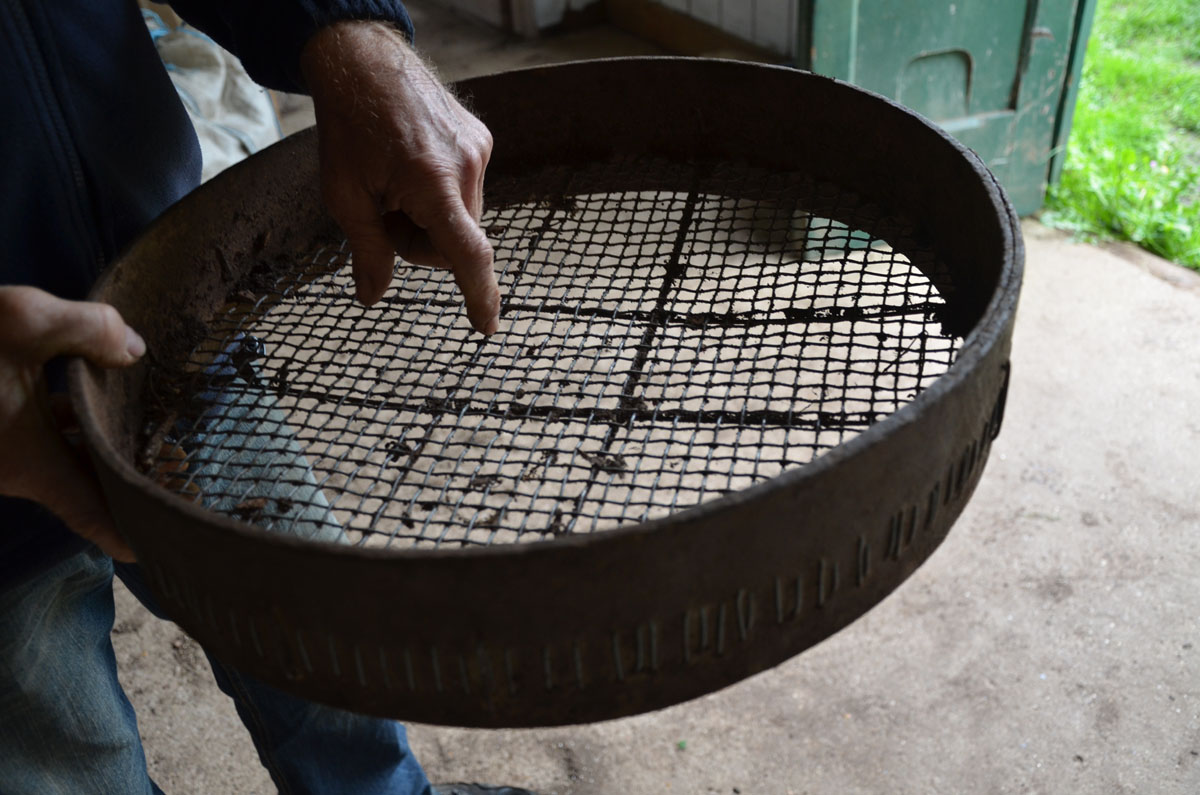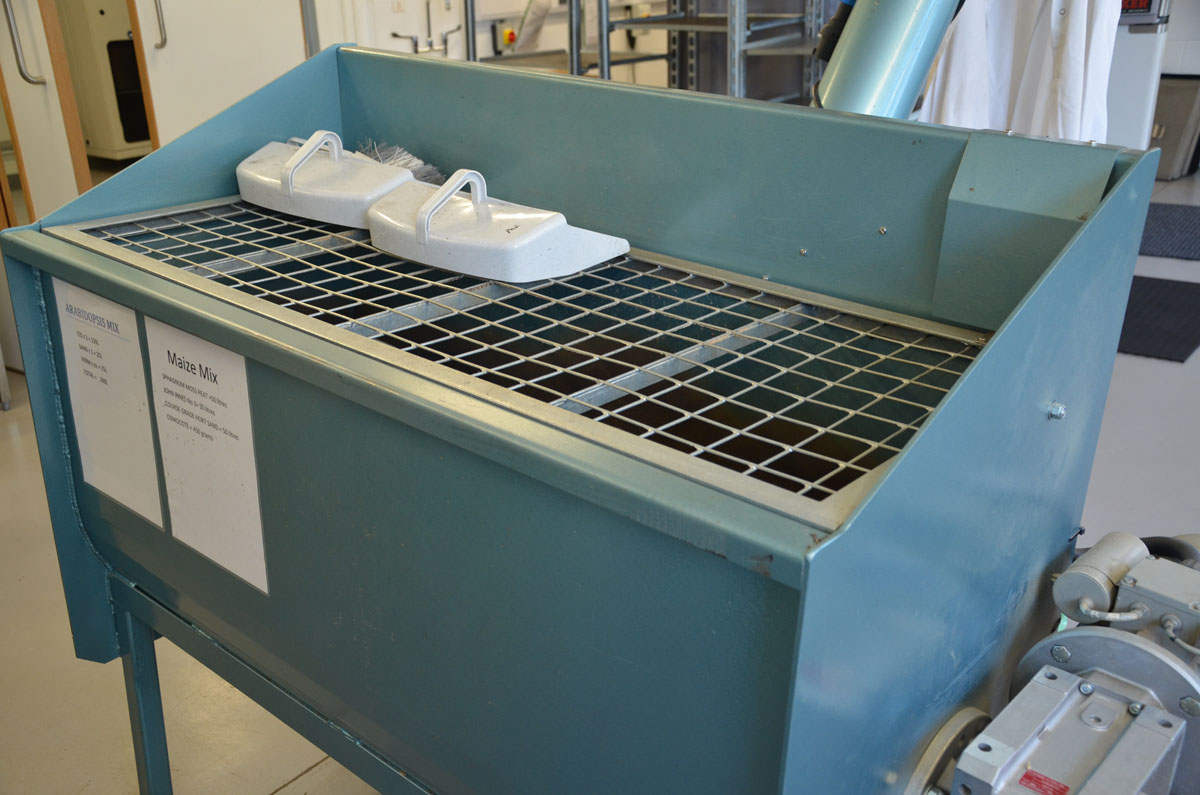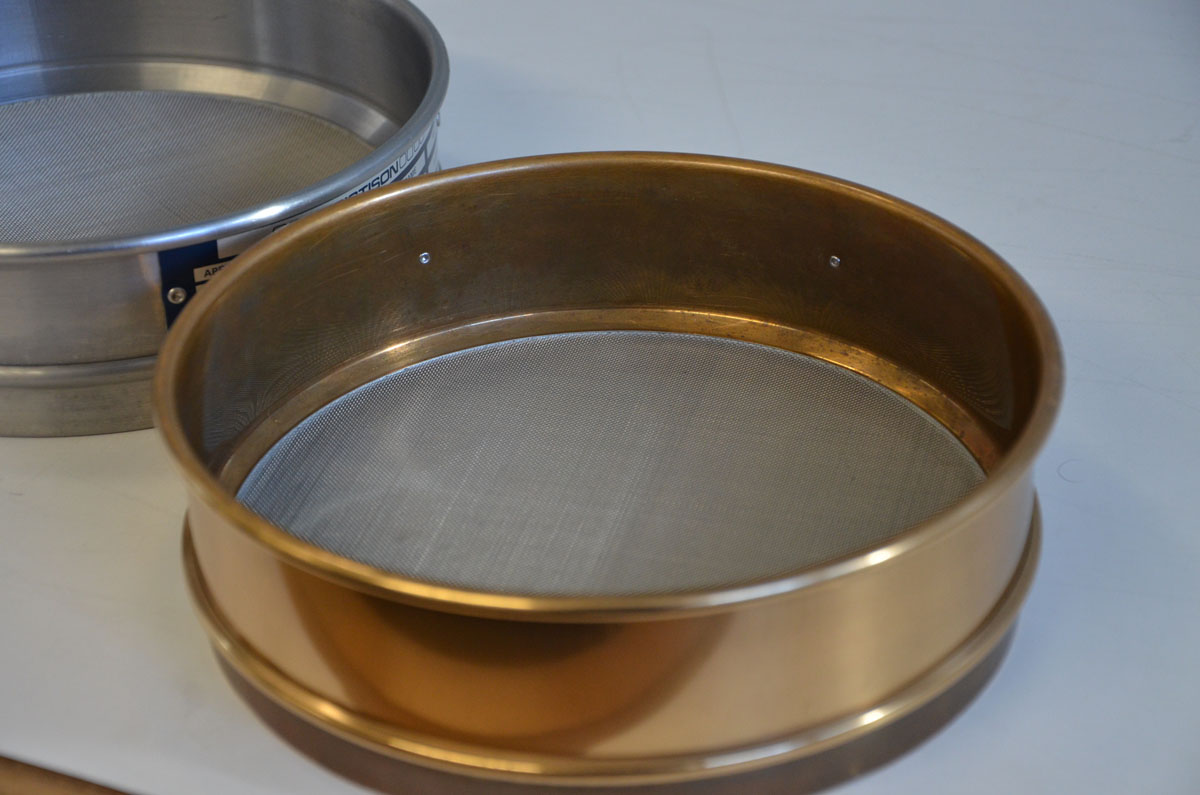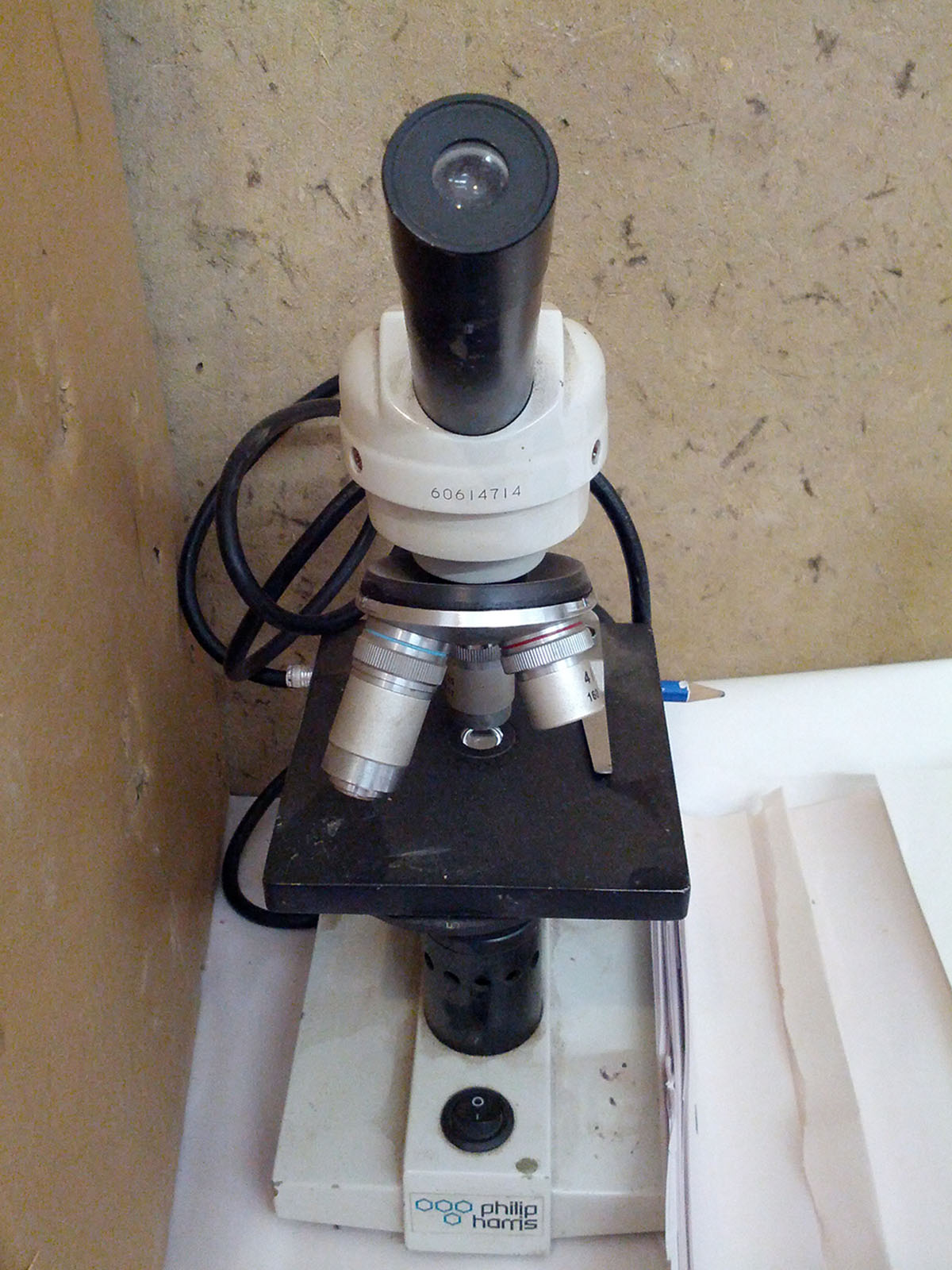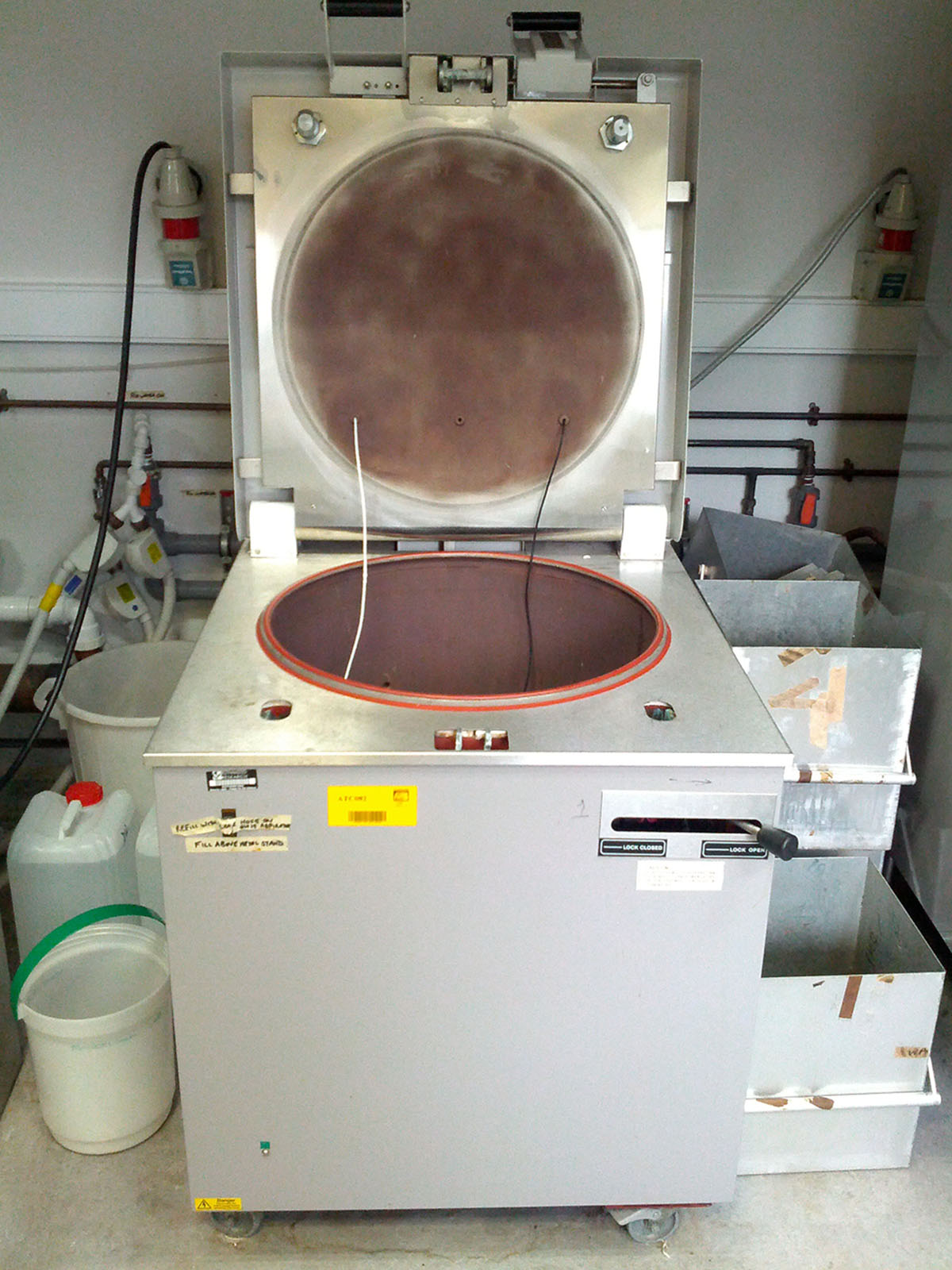Soil is emerging as an area of critical concern within policy and environmental debates taking place in the UK. There is a sense that the pollution, erosion and degradation of agricultural land require urgent action toward the protection of soil. This entails the need for securing undisrupted food production while decreasing fertiliser use. In this search for sustainable solutions to an increasingly threatened food system, the soil microbiome – the microbial communities living in soil – emerges as a key instrument to address the environmental destruction characterising what has come to be known as the Anthropocene. The soil microbiome establishes relationships with the plant roots, it provides them with nutrients and protects them from disease and drought. Soil microbiologists are therefore studying largely unknown microbial populations to attempt the management and harnessing of these communities living underground. Alongside the scientific effort to manipulate and exploit the soil microbiome, this form of knowledge travels outside laboratory boundaries to touch and shape practices and relationships across agricultural lands.
This visual essay draws on images taken during my doctoral ethnographic fieldwork that explored the constitution of a primarily scientific knowledge as it circulates and is translated across agricultural fields. As small-scale growers begin to engage with microbial life, these human/microbe associations manifest through the objects and practices they employ. Through these objects, it is possible to consider how norms and practices of management negotiate the relationship between humans and microorganisms. Attitudes to biological activity emerge through these ‘things’ as ways of defining, encouraging and delimiting the boundaries of microbial life. In exploring these relationships, I follow the call to avoid minimising material things and artefacts, instead taking them seriously (Henare, Holbraad & Wastell 2007). I attempt therefore to go beyond a ‘distinction between concepts and things’ because ‘things’ are not symbols of a hidden meaning, but are the meaning itself (2007: 2). In this way, the visual data collected through my fieldwork does not simply wait for an appropriate theory in order to be analysed. Instead, the things emerged through these images ‘are allowed to dictate the terms of their own analysis’ (Henare, Holbraad & Wastell 2007: 5). This ‘thinking through things’ as a methodology entails an engagement and concern with the things participants think through.
Visiting a number of laboratories and growing sites, objects like sowing pots emerged as useful to think with. In three knowledge spaces located in England, human/microbe relations are performed and practiced through these objects. Together with other labs and agricultural sites I explored in my fieldwork, I attended these locations in a recursive manner, allowing for each site and visit to inform and trace connections with the next. The first place of microbial interest is an organic farm selling produce to the local community, nationally renowned for its environmental and sustainability commitments focused on soil. The second site is an organic cooperative located at the outskirt of a city, growing produce for urban dwellers and promoting food autonomy and community engagement. The third space is a scientific laboratory built in recent years and located in a university campus. The facility is used by life sciences staff to conduct research including studies on the microbial communities living in soil.
In line with an intentional defiant politics employed at the farm that encourages as much microbial activity as possible, Figure 1 shows ‘unclean’ pots that have never been washed or sterilised because the microorganisms of the soil are highly valued on site. At the food growing cooperative, sowing pots appear as simply ‘messy’, thus neither encouraging nor managing friendly microbial encounters, but rather reflecting the diversity of members and volunteers working at the coop (Figure 2). On the other hand, practices of control and boundary work emerge through pots at the laboratory facility used for soil microbiome research. The lab displays immaculate pots and strong regulatory procedures in place to keep ‘dirt’ at bay (Figure 3). Managing the proliferation of microbes in a lab is necessary to ensure the experiments are standardised, thus these practices of control demonstrate a cautious behaviour where microbes are seen as in need of strict regulatory procedures.
Following the premise that considers things as meaning (Henare, Holbraad & Wastell 2007), the sowing pots in these diverse spaces do not stand for, represent or illustrate a different meaning in need of being uncovered. Meaning does not emerge as a separate symbol inscribed on the pots, but pots are identical to the meaning itself. The pots are, in themselves, the encouragement of microbial activity, the multiple hands and habits that touch them and the regulations and norms in place to control them.
Heather Paxson’s concept of microbiopolitics, ‘the creation of categories of microscopic biological agents’ (2008: 17), is useful here to consider pots as the actors and mediators in growers’ and scientists’ relationship with microbes. The management of human populations is extended to the ordered regulation of microbial communities. Microbiopolitics shows that contested governance of microbial life is analogous to the management of human relations (Paxson 2008). Between Pasteurian, hyperhygienic stances aligned with germ theory, and post-Pasteurian, microbial friendly, respectful and admiring microbiopolitics, the contrasts clean/dirty and orderly/messy show that sowing pots do not simply demonstrate the norms in place, but are themselves the ways through which these regulations, attitudes and politics are established and put into practice to either discourage or embrace the proliferation of microbial life. Soil microorganisms are then intruders to keep at bay, on one hand, and contributors to soil health and food growing, on the other.
The microbiopolitics of ‘messiness’ and ‘dirtiness’ of pots at the growing sites is also connected to an element of ‘slow pace’ embraced by the growers. Growers’ collective relationship with microbes and soil in this context seems to underline the need for slower modalities of knowing that are paced according to the temporal rhythm of soil processes. This ‘relaxed’ temporality is in tune with the constitution of soil as a slow material of decay, and it shows a contrast between short-term quick fixes epitomised by technological microbial interventions and slower, long-term change in soil practices. Following the materiality of soil in its temporal rhythm, the growers counter the fast pace of high tech inevitably out of tune with the course of soil formation. This element emerges in the practices of soil management employed at the growing sites I visited, embracing an approach to soil that minimises advanced technological interventions.
Compost making emerges in this context as a microbiopolitical practice of microbial encouragement. Here I draw on conversations within feminist science studies that reimagine the practice of composting as a process of collaborative decomposition (Haraway 2016). ‘Making oddkin’ across and among webs of species, critters and composting matter can allow for a rethinking of human exceptionalism (2016: 4). Growing, composting and decomposing are enmeshed in continuous transformational processes of living and dying, renewal and decay (Lyons 2016). Through composting, life and death amalgamate and return to each other, while every turning of organic matter brings the reanimation of more life, more death. In line with the current awakening of soil as living, composting becomes a ‘necessary doing’, a form of care for soil organisms that is both an obligation and a relational interdependence (Puig de la Bellacasa 2017:147). Through composting, caring for human and nonhuman communities are no longer distinguishable practices. In this alterbiopolitics, different modes of decentred ecological care do not hold the human self at their core but attend to the interconnectedness of more than human collectives and relationships (2017). Alongside these invitations, arguments advanced in political ecology, agroecology and campesino movements also point to the need to reconsider the expertise produced by small-scale farmers as forms of ecological relations (Millner 2017). From these perspectives, compost making allows for small farmers to enter a sensorial relationship with soil microbial communities (Millner 2017). Composting becomes more than a beneficial practice. With an increasing attention to the microbial, compost making assumes a central role in the process of relating to other life forms. In this context, the growing spaces presented in this essay stand as sites of knowledge production contributing to the making of novel forms of soil relations performed through an attention to decomposing matter. This microbial politics entails transformative ecological practices focused on decay, mould and the needs of invisible organisms.
At the cooperative that mainly employs slow-paced technology, most tasks are carried out manually, from sowing seeds to planting trees and weeding. Compost making is a physically demanding task carried out by adding and mixing a number of ingredients with the assistance of a fork or a spade (see Figure 4). Similar dynamics are in place at the organic farm, also employing relatively basic tools such as an old cement mixer to combine the compost ingredients (see Figure 5). After mixing them, the compost is manually sieved (Figure 6). This ‘slow’ method of compost making demonstrates the growers’ close relationship with soil and it contrasts with the state-of-the-art facility I visited where soil microbiome research is carried out. The laboratory employs an electric compost mixing machine using as one of the ingredients a chemical aimed at eliminating possible pests (Figure 7). Here seed sieves are kept clean and tidy (Figure 8).
Attempting to overcome the distinction between meaning and thing involves seeing these objects for their meanings, namely thinking through things that participants think through in order to understand their worlds (Henare, Holbraad & Wastell 2007). Spades and machines then become objects of meaning that speak clearly of the microbiopolitics of management or appreciation of microbial life. As the level of technology moves from manual spades to clean machinery and from bodily closeness to distance and separation, the attitude toward microbial life becomes one of control and detachment. Against the post-Pasteurian picture defined by microbial trust and alliance emerging at growing sites, the microbiopolitics of soil life embraced through laboratory practice surfaces as a Pasteurian characterisation based on microbial management and safety control (Paxson 2008).
Post-Pasteurian microbiopolitics in the soil realm are particularly evident when considering the object featured in Figure 9. This microscope, an instrument employed primarily in laboratory settings to magnify objects invisible to the naked eye, is displayed on a table in the cooperative’s classroom used for horticultural training. Rather than revealing particular hidden meanings around its presence in a food growing site, the microscope is in itself the affective shift toward microbiopolitical mattering undergoing growing practices. The cooperative’s microscope shows the appropriation of this life form as relevant for the practice of small-scale food growing.
As a concluding reflection, it is pertinent to consider the ultimate Pasteurian microbiopolitical act, the erasure of soil microbes. Figure 10 features an autoclave in operation at a laboratory, a chamber designed to eliminate microbial life once it is no longer useful. The autoclave, perhaps more starkly than any other ‘thing’ presented in this essay, does not merely represent the end as a symbolic meaning. Instead, the machine is itself the act of sterilised eradication and disposal of a life form, a nonhuman now become useless.
As argued by Paxson when considering the microbial life in cheese, an awareness of the billions of microorganisms thriving underground must not only acknowledge, but take good care of, this invisible life because ‘practices of nature-culture are microbial as well as human’ (2008: 39). A consideration of microbial life for its intrinsic value and beyond mere instrumental benefits may then lead to more reflexive practices in the field as well as the lab, including the act of erasure in the autoclave. In the context of ongoing, multiple, interconnected environmental and public health crises, this microbial awareness may turn vital in reorienting human-nonhuman relations, a shift needed to overcome the productivist, reckless and destructive practices characterising the current epoch.
Competing Interests
The author has no competing interests to declare.
Author Contributions
All photos taken by author.
References
1 Haraway, D. (2016). Staying With the Trouble: Making Kin in the Chthulucene. Durham and London: Duke University Press. DOI: http://doi.org/10.2307/j.ctv11cw25q
2 Henare, A., Holbraad, M., & Wastell, S. (2007). Thinking through things. In A. Henare, M. Holbraad & S. Wastell (Eds.), Thinking Through Things: Theorising Artefacts Ethnographically (pp. 1–37). London: Routledge. DOI: http://doi.org/10.4324/9780203088791
3 Lyons, K. (2016). Decomposition as Life Politics: Soils, Selva, and Small Farmers Under the Gun of the U.S.-Colombia War On Drugs. Cultural Anthropology, 31(1), 55–80. DOI: http://doi.org/10.14506/ca31.1.04
4 Millner, N. (2017). “The Right to Food is Nature Too”: Food Justice and Everyday Environmental Expertise in the Salvadoran Permaculture Movement. Local Environment, 22(6), 764–783. DOI: http://doi.org/10.1080/13549839.2016.1272560
5 Paxson, H. (2008). Post-Pasteurian Cultures: The Microbiopolitics of Raw-Milk Cheese in the United States. Cultural anthropology, 23(1), 15–47. DOI: http://doi.org/10.1111/j.1548-1360.2008.00002.x
6 Puig de la Bellacasa, M. (2017). Matters of Care: Speculative Ethics in More Than Human Worlds. Minnesota: University of Minnesota Press. DOI: http://doi.org/10.1017/S2753906700002096

